Rwanda, with good reason, is known as the Land of a Thousand Hills. Every part of the country I passed through involved a journey on twisting roads, through mountainous landscapes. In fact, the whole of Rwanda is at altitude, the lowest point in the country has an altitude of 950 metres, only slightly lower than the highest point in England. The highest point is Mount Karisimbi which reaches a whopping 4507 metres in altitude.
When you reach the tranquil Lake Kivu port of Kibuye though, Rwanda stops being the Land of a Thousand Hills and becomes the Land of a Thousand Islands. Dotted throughout the lake are numerous small islands, little hills in their own right, which make the views over the lake so wonderful.

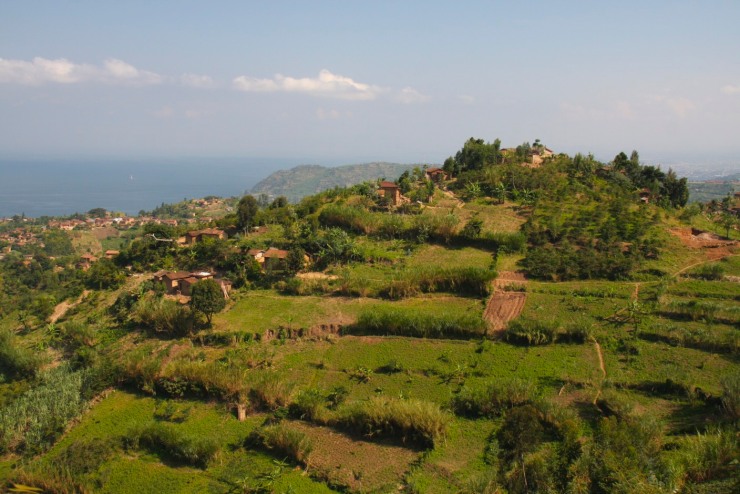
I didn’t have much time to visit Kibuye, but so many people had told me to go there, I felt I should make the effort to leave the beach at Gisenyi behind and journey further south. My map showed what looked like a good road from Gisenyi to Kibuye, but all the public transport seemed to go to the capital, Kigali, where I’d have to get another bus. Asking around, people told me the direct route was possible, and passed through Rwanda’s tea growing country. I decided to hire a car and driver.
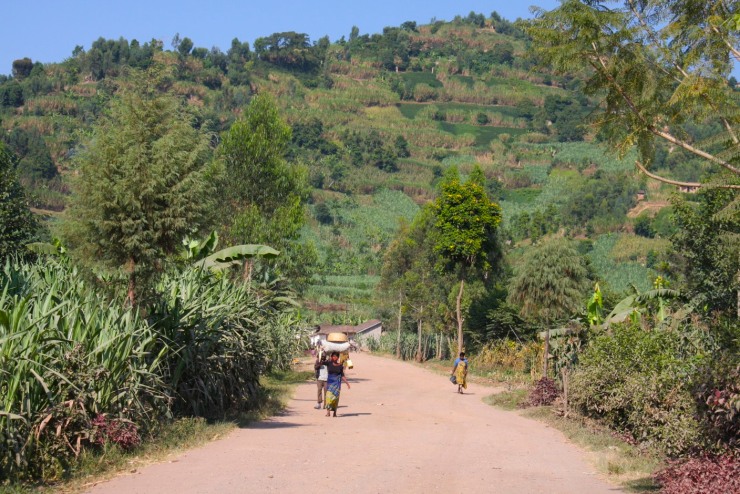
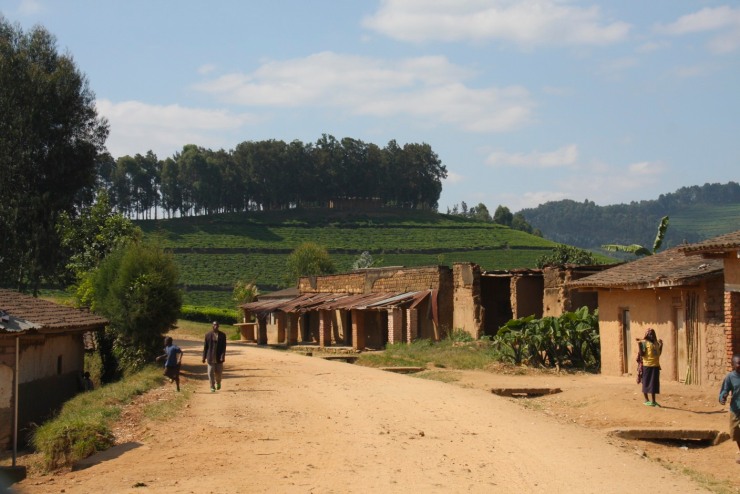

The journey started uneventfully. The road was dirt but well maintained, and for an hour or so we slowly climbed from Lake Kivu into the hills. The views over the lake were spectacular, but the further we went the worse the road became. There were some truly scary moments, once almost being run off the road by a truck. More positively, as one of the few vehicles on the road, we regularly stopped and gave lifts to people. In a mixture of bad French and faltering English, I found out more about life in the villages we were passing through.
Bizarrely, high in these hills, the landscape started to remind me of Switzerland – just with plantains growing everywhere. At one point we passed through an area of dairy farms, which took me by surprise. It turns out this is a major dairy farming region.


Eventually we saw Kibuye spread out below us, and we dropped out of the mountains back towards Lake Kivu. Soon we were on a paved road and heading towards the lovely Moriah Hill Resort Hotel, where I decided to splash out for a room with a view in the best hotel in town.
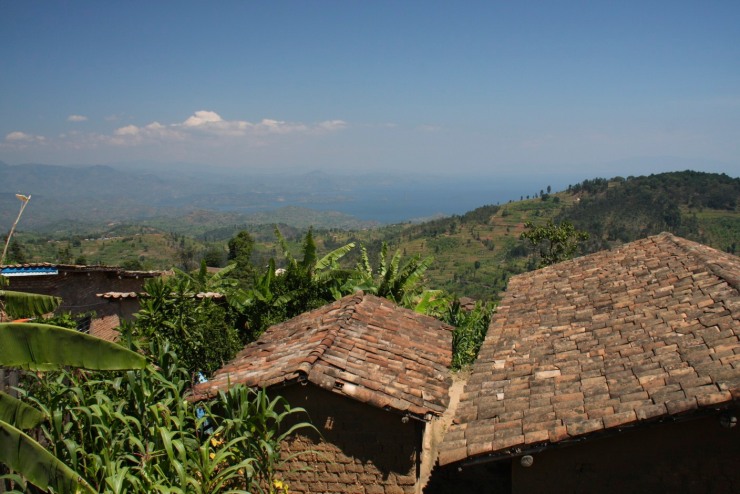



Kibuye is a peaceful place. At weekends the town sees an influx of people from Kigali, here to enjoy the lake and healthy environment, but during the week the town is very quiet. It is so tranquil and relaxed, that it is almost impossible to imagine the horrors that took place here during the genocide. Over 90% of the Tutsi population of this area was murdered, and yet again the killing centred on the local church. The story of what happened in Kibuye is told evocatively by journalist Chris McGreal. It is a report that is shocking but should be made compulsory reading.


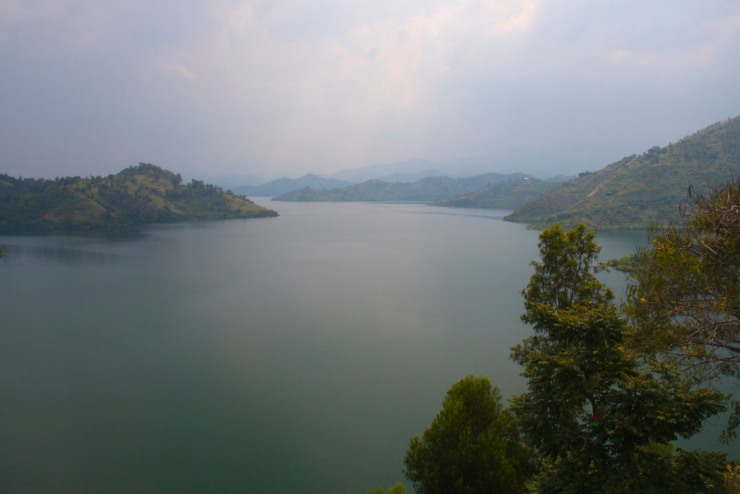
Government officials directed people displaced by the violence to gather at the St. Jean Catholic Church and Home Complex, which stands on a hill and commands a beautiful panorama over the lake. More than 11,000 Tutsi took refuge here, most of them were murdered, often in horrendous ways, by people they knew. The Hutu priest of the church of St. Jean’s, unlike so many of his co-religionists who collaborated with the genocide, acted with great bravery. He was given the choice to leave the church and save his life, but he chose to die with his Tutsi ‘congregation’.
It’s hard to contemplate while standing in this place today, especially as the sound of music drifts out of the church and over the surrounding countryside, but it was here that the first massacre of unarmed civilians took place in Kibuye. Thousands were killed with guns, grenades and machetes. A simple memorial overlooking the lake bears silent witness to those events. The Rwandan government had wanted to keep the church as it was in 1994 – bullet holes, grenade blasts and blood stains – as a memorial to the dead, but the Catholic Church resisted and the church was ‘cleansed’ and reconsecrated.

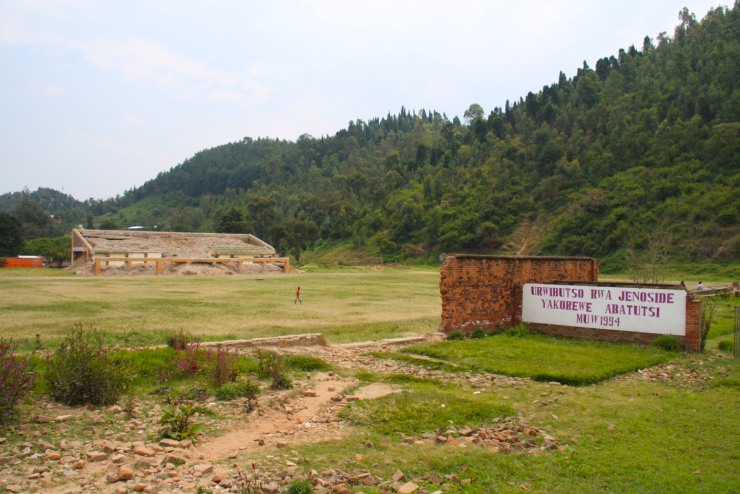
The second massacre in Kibuye happened at the sports stadium. People had gathered at the stadium because the authorities directed them there for their ‘safety’. Once there, they weren’t allowed to leave, nor were they permitted food or water. People became so desperate they ate the grass from the football pitch. On April 18, 1994, a single gunshot was fired into the air, the signal for the killing to begin. Ten thousand people were killed at the stadium, their remains are buried in a mass grave next to the demolished stadium.
Over a two day period more than 21,000 men, women and children were butchered at the church and stadium. A level of killing which is beyond imagination, both in its savagery and efficiency.
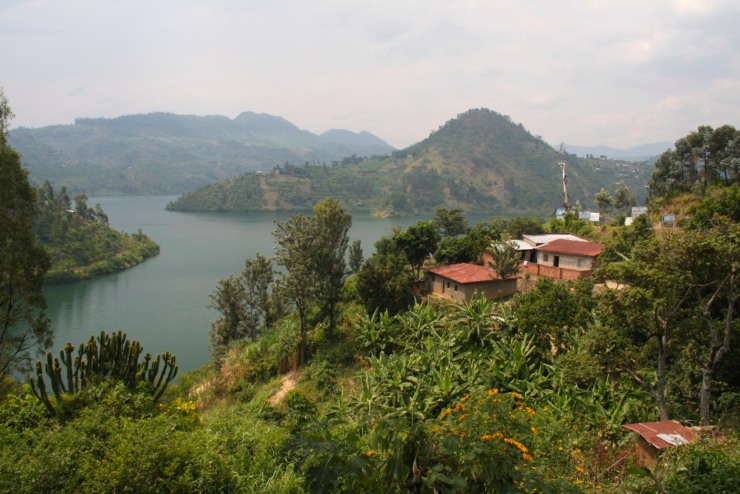
As Chris McGreal‘s article points out, today the surviving Tutsi are forced to live amongst the killers of their families and friends. More and more Hutu murderers have been released from prison, many have moved back into the communities they destroyed in 1994. As a visitor, none of this is especially obvious, and Kibuye seems like a place that is looking towards a brighter future. A future that is embracing tourism for all the right reasons, but which remains tainted by the past.

It’s a bit difficult to find anything to say…..
I didn’t know about Kibuye’s genocide history before I arrived, truly shocking when you’re enlightened. It’s a weird thing, but its very likely that as a tourist you meet, talk to, get in a cab with, share a drink with, people who committed some of those terrible crimes. Even stranger, it never occurred to me when I was there.